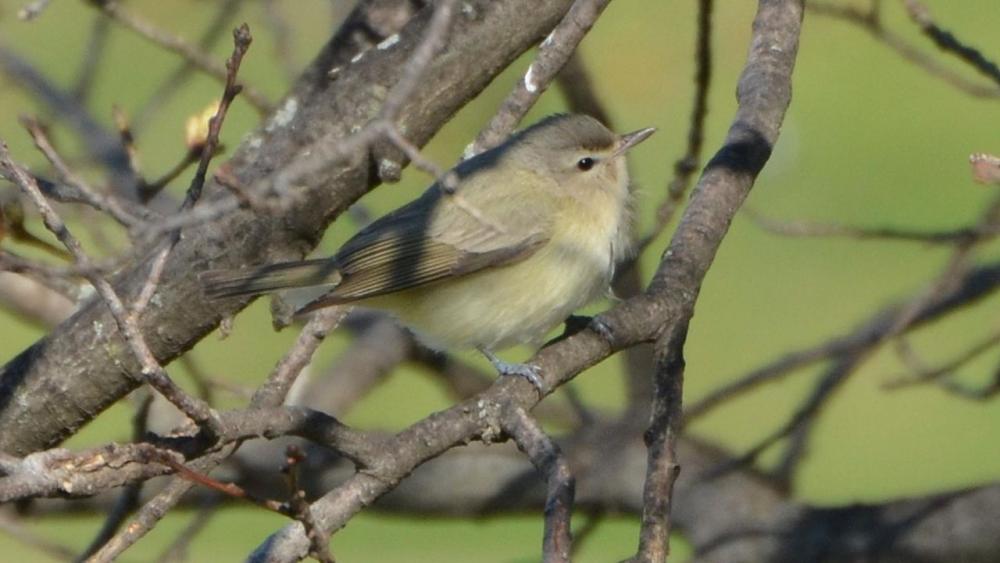Guide to Boreal Birds
Overview
The best place to look for this modestly plumaged vireo is in a grove of tall shade trees on the bank of a stream. Here, in the breeding season, one may hear its rambling song and, after a careful search, spot it moving deliberately through the foliage in pursuit of insects. Although still common in many areas, the Warbling Vireo has decreased considerably because of extensive spraying of pesticides on shade trees.
Description
5-6" (13-15 cm). Sparrow-sized. Similar to Red-eyed Vireo: olive-green above, whitish below, with no wing bars-but lacks bold face pattern, having only a narrow white eyebrow. The Philadelphia Vireo (Vireo philadelphicus) is also similar, but has yellow tinge to underparts and dark spot between eye and base of bill.
Voice
Drowsy, rambling warble, like song of Purple Finch but slower; ends on rising note.
Nesting
3 or 4 brown-spotted white eggs in a well-made pendant cup of bark strips and plant down fastened to a forked twig, usually near the top of a tall tree.
Habitat
Deciduous woodlands, especially near streams; in isolated groves and shade trees.
Range/Migration
This common species breeds in wooded habitat through most of the United States and western Canada, but its winter range is a relatively small portion of western Mexico and Central America. During winter, Warbling Vireos are usually found foraging in mixed species flocks in undisturbed deciduous forests. This rather narrow habitat preference makes this species particularly vulnerable to declines related to habitat loss in its winter range. Recent trends show spring migration to be occurring later, possibly due to reduction of wintering habitat. Western populations apparently stop in northwestern Mexico to molt before proceeding with northward movement.
Breeds from British Columbia, southern Mackenzie, Manitoba, and New Brunswick south to northern Mexico, Louisiana, and Virginia. Winters in tropics.



